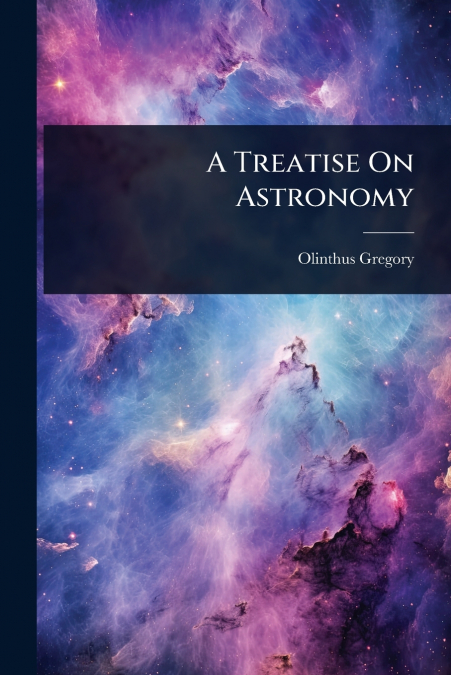
Olinthus Gregory
'A Treatise On Astronomy,' by Olinthus Gregory, originally published in 1802, offers a comprehensive exploration of astronomical science as understood at the turn of the 19th century. The book meticulously deduces the elements of astronomy in a logical order, starting from celestial observations made on Earth. Gregory employs mathematical principles to demonstrate these concepts, explaining them through applications to various astronomical phenomena. This treatise provides insight into the scientific methodologies and understandings of its time, making it a valuable resource for historians of science and anyone interested in the evolution of astronomical thought. Gregory’s detailed approach and mathematical rigor offer a deep dive into the mechanics of the heavens as perceived centuries ago. Readers gain a unique perspective on the foundations upon which modern astronomy was built. 'A Treatise On Astronomy' remains a significant work for understanding the history of scientific inquiry and the enduring human quest to comprehend the universe.This work has been selected by scholars as being culturally important, and is part of the knowledge base of civilization as we know it. This work was reproduced from the original artifact, and remains as true to the original work as possible. Therefore, you will see the original copyright references, library stamps (as most of these works have been housed in our most important libraries around the world), and other notations in the work.This work is in the public domain in the United States of America, and possibly other nations. Within the United States, you may freely copy and distribute this work, as no entity (individual or corporate) has a copyright on the body of the work.As a reproduction of a historical artifact, this work may contain missing or blurred pages, poor pictures, errant marks, etc. Scholars believe, and we concur, that this work is important enough to be preserved, reproduced, and made generally available to the public. We appreciate your support of the preservation process, and thank you for being an important part of keeping this knowledge alive and relevant.